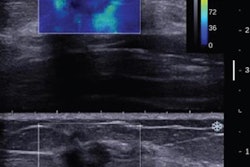Dear AuntMinnie Member,
The dreaded Zika virus has sent shock waves around the world since it first appeared in the Americas in late 2015. The disease can have devastating effects on pregnant women and their babies, the most heartbreaking of which is microcephaly, in which babies are born with an abnormally small head.
Imaging modalities such as ultrasound and MRI can help identify signs of Zika early on, according to a new report published today in Radiology. A group that included Brazilian physicians recorded the radiology appearance of almost 50 cases of Zika infection, providing a road map of the key signs to look for in suspected cases.
One important point is that it may take more than one fetal ultrasound scan to fully appreciate the evidence of Zika infection, according to the authors. Learn about other details to look for by clicking here, or visit our Ultrasound Community at ultrasound.auntminnie.com.
MRI and CTE
In other news, a new case report raises the hope that MRI can detect signs of anatomical changes in the brain that could indicate chronic traumatic encephalopathy (CTE). Researchers believe the findings could represent the first time CTE has been identified in a living person.
CTE has been linked to various neurological ailments such as memory loss and depression, and it has been in the spotlight due to concerns about its connection to traumatic brain injuries that result from activities like contact sports and military combat. So being able to detect it early would definitely be a boon.
Researchers from California described a case study in which 3-tesla MRI and specialized software detected changes in brain volume -- which can be a hallmark of CTE. Read more about it by clicking here, or visit our MRI Community at mri.auntminnie.com.
Breast screening every 3 years?
Much of the debate over the value of breast screening has focused on how often it should be performed, with the main options being either annually or every two years. But a new study makes an intriguing -- and controversial -- proposal: Low-risk women might only need screening every three years. Find out why researchers think this interval would work by clicking here, or visit our Women's Imaging Community at women.auntminnie.com.



















